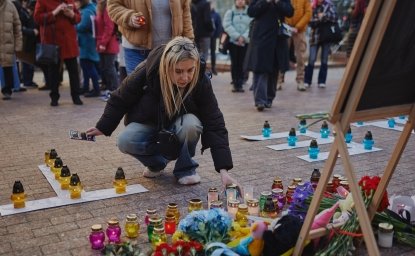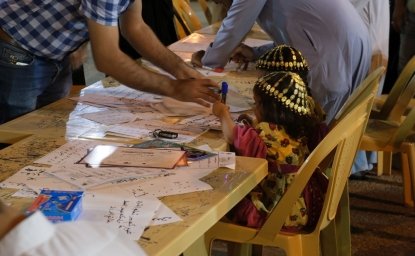Will a Mouse Find Malaysia Airlines Flight 370?
The search for MH370 is proof that crowdsourcing will become a vital part of aid and rescue efforts in the future.
The search for MH370 is proof that crowdsourcing will become a vital part of aid and rescue efforts in the future.
By: Shihoko Goto
With the Malaysian air carrier still missing out in the Indian Ocean, the multinational effort to find the airplane can hardly be called a roaring success. But what has become one of the biggest aviation mysteries of all time has an unprecedented level of grass-root international cooperation as well.
In fact, the power of the mouse may well be as powerful as any conventional government agency when it comes to efforts that require mass mobilization. It can certainly leapfrog many of the diplomatic tensions facing countries through official channels.
Armchair volunteers
Within the first week since Maylasia Airlines Flight 370 went missing March 8, more than two million people worldwide have used the power of their fingers to do their part for the rescue effort by clicking through satellite imagery, one tiny speck of a frame at a time, via technology provided by DigitalGlobe, a publicly listed company based in Colorado.
Its crowdsourcing platform, Tomnod, allows anyone with Internet access to log on and view images taken by its satellites to tag over 24,000 square kilometers of ocean and land.
More than eight million people from around the world have contributed to 14 million tagging efforts since the crowdsourcing campaign’s launch, as armchair volunteers scoured randomly assigned minuscule slivers of satellite imagery for the remotest sign of plane wreckage.
The two most active nations — accounting for a combined 775 million map views — are the United States and China. But volunteers have logged in from as far away as Mali and Iceland, according to Tomnod. The company adds that it has been “working closely with the search authorities in the United States and Australia, and have considerably helped them in allocating their resources efficiently.”
Pouring over frame upon frame of what are essentially vast areas of gray for even the remotest sign of object may not be everyone’s idea of a good time. But for those civically minded folks who want to contribute to the search efforts, this is a rewarding exercise that transcends nationality.
DigitalGlobe’s single biggest client to date for its data has been the U.S. government. But its technological capabilities and willingness to share information is a new benchmark for pooling together the efforts of volunteers from the online community.
Political frictions
Still, their efforts cannot replace the efforts by the governments of Australia, Britain, China, Japan, Malaysia, New Zealand, South Korea, and the United States and the Perth-based Joint Agency Coordination Center that was established to coordinate the search.
But even as they try to work together to find the Malaysian carrier that was largely occupied by Chinese nationals, politics has certainly been a cause for friction — as China and Malaysia continue their dispute over territories in the South China Sea.
In fact, the ongoing friction over territories in the South China Sea have led to delays, not to mention distrust, in coordinating and cooperating in the search for the missing airplane. Bitterness over China’s claim to territories coveted by Malaysia, the Philippines, Vietnam and Brunei, as well as territories in the East China Sea claimed by Japan, has cast a shadow over Beijing’s stated desire for greater international cooperation. It has also undercut its ability to lead the rescue effort.
These tensions contrast sharply with the spirit of goodwill that prevails in the crowdsourcing sphere. The optimism of the cyber-volunteers also contrasts with public frustrations over official efforts to track down the plane.
Mounting costs
Then there is the question of the cost of the ongoing search effort. Much has been made about the scores of planes, submarines and ships mobilized by participation nations. But relatively little attention has been paid to the mounting price tag, especially with the search dragging on now for more than a month.
The U.S. Department of Defense has allocated $4 million for the operations, but had already spent $3.2 million by March 24. The longer the search, the more the campaign will obviously cost. Yet the biggest cost will be after the plane is actually recovered, and the need to invest in technologies to prevent such disasters in the future is identified.
For the Internet savvy, this is nothing new. Nearly 409,000 tags were made by volunteers to map out damages to roads and buildings after Typhoon Haiyan devastated the Philippines last November. The Oklahoma tornado which struck the state in May 2013 saw over 106,000 tags made.
The problem, however, is that the flexibility and openness of crowdsourcing image providers may be a weakness as much as a strength. Investors, for instance, have not yet been enamored with crowdsourcing as a way forward in global search efforts, insofar as DigitalGlobe’s lackluster performance on the New York Stock Exchange over the past month is an indication of the industry in the future.
Nevertheless, given the technological advancements in satellite imagery and its public dissemination on the one hand, and the ever-growing appetite for “couch volunteering” on the other, crowdsourcing will certainly become a growing part of aid and rescue efforts in the future.
Diplomatic tensions may continue to engulf the Asia-Pacific region, but such goodwill may go a long way in bringing together nations that may otherwise be bogged down by hostility.
Editor’s note: This article was updated on April 11 to provide additional information on the number of people viewing the Tomnod satellite images.
This article originally appeared on The Globalist.

The Indo-Pacific Program promotes policy debate and intellectual discussions on US interests in the Asia-Pacific as well as political, economic, security, and social issues relating to the world’s most populous and economically dynamic region. Read more



